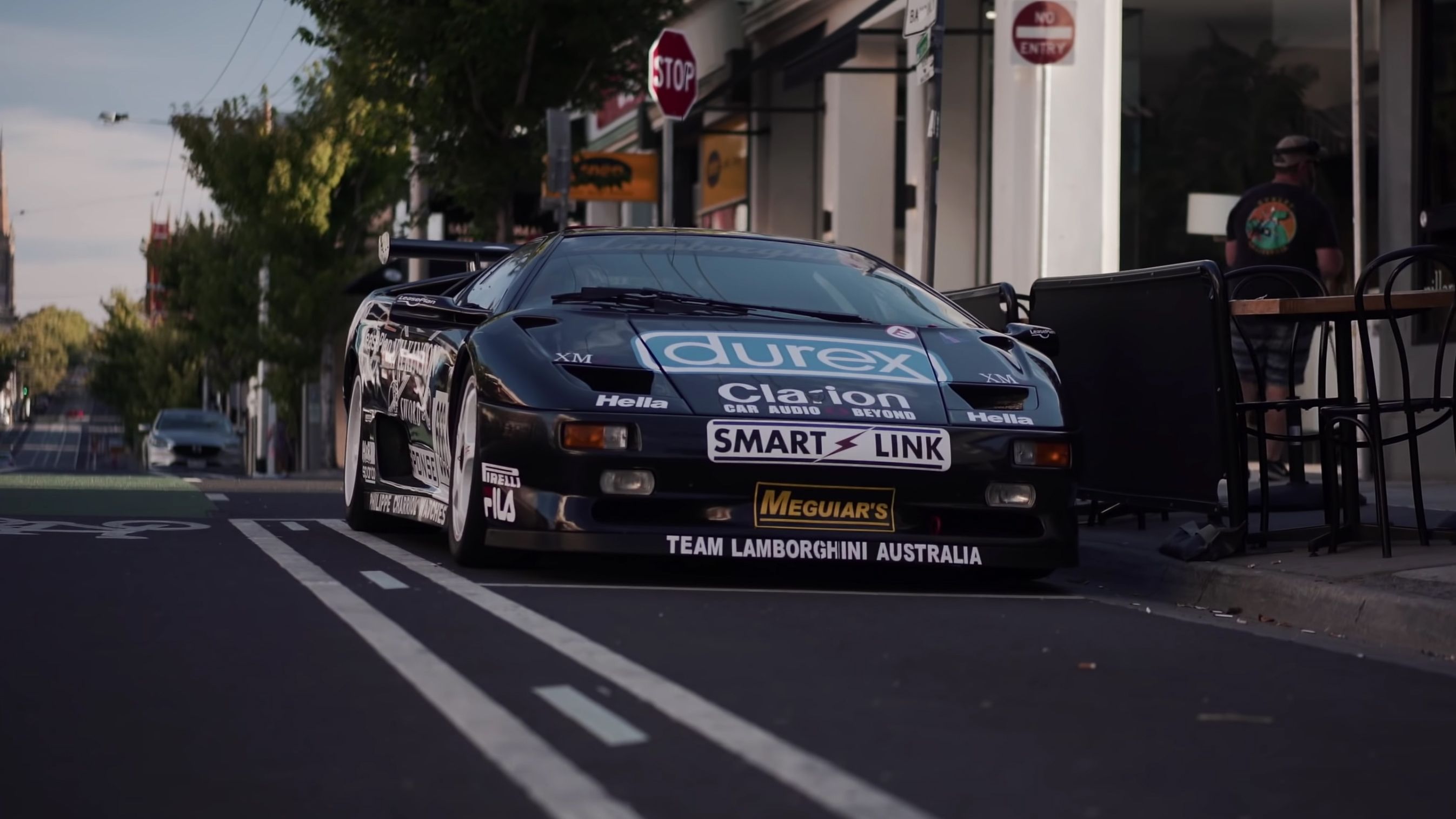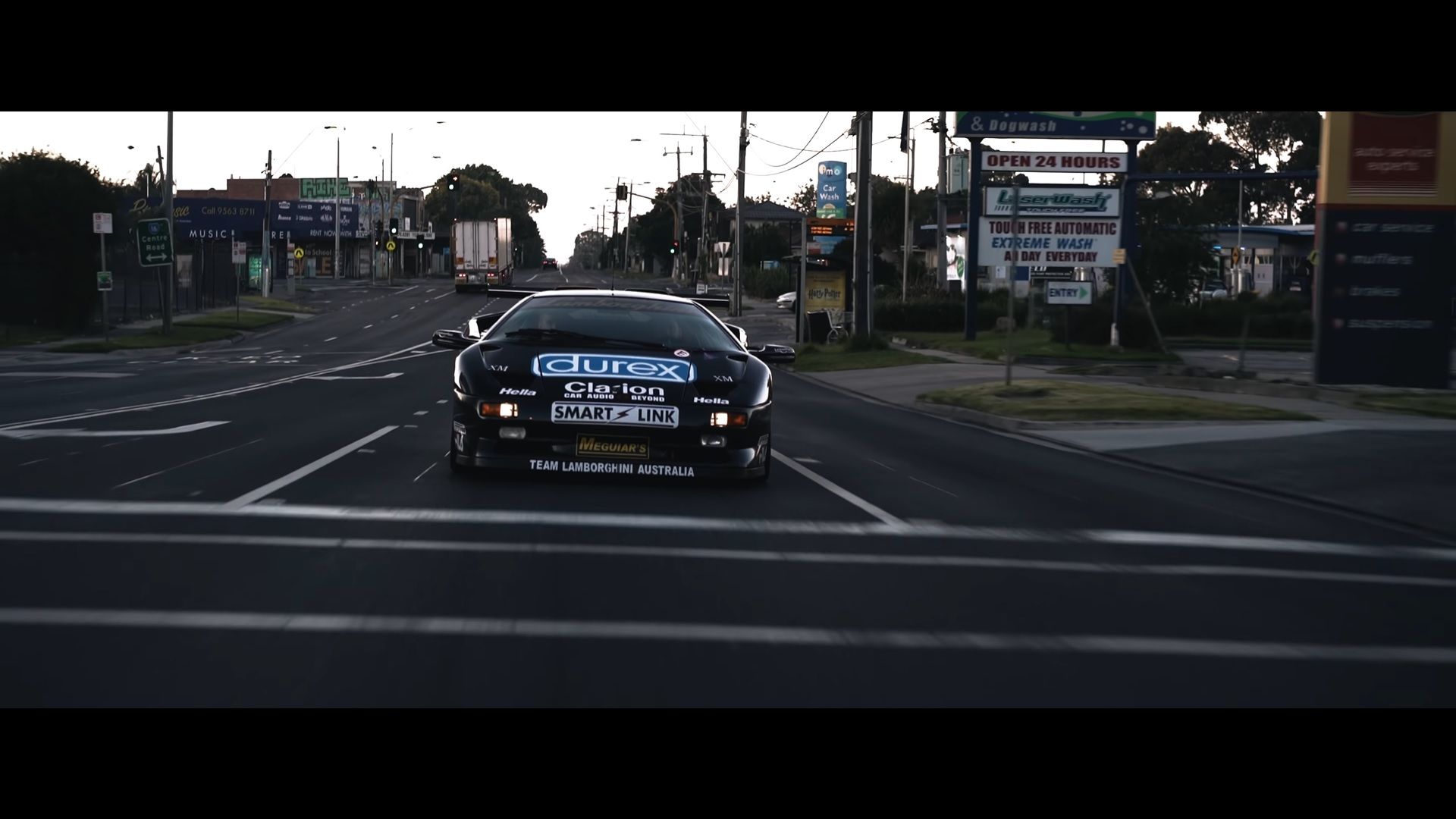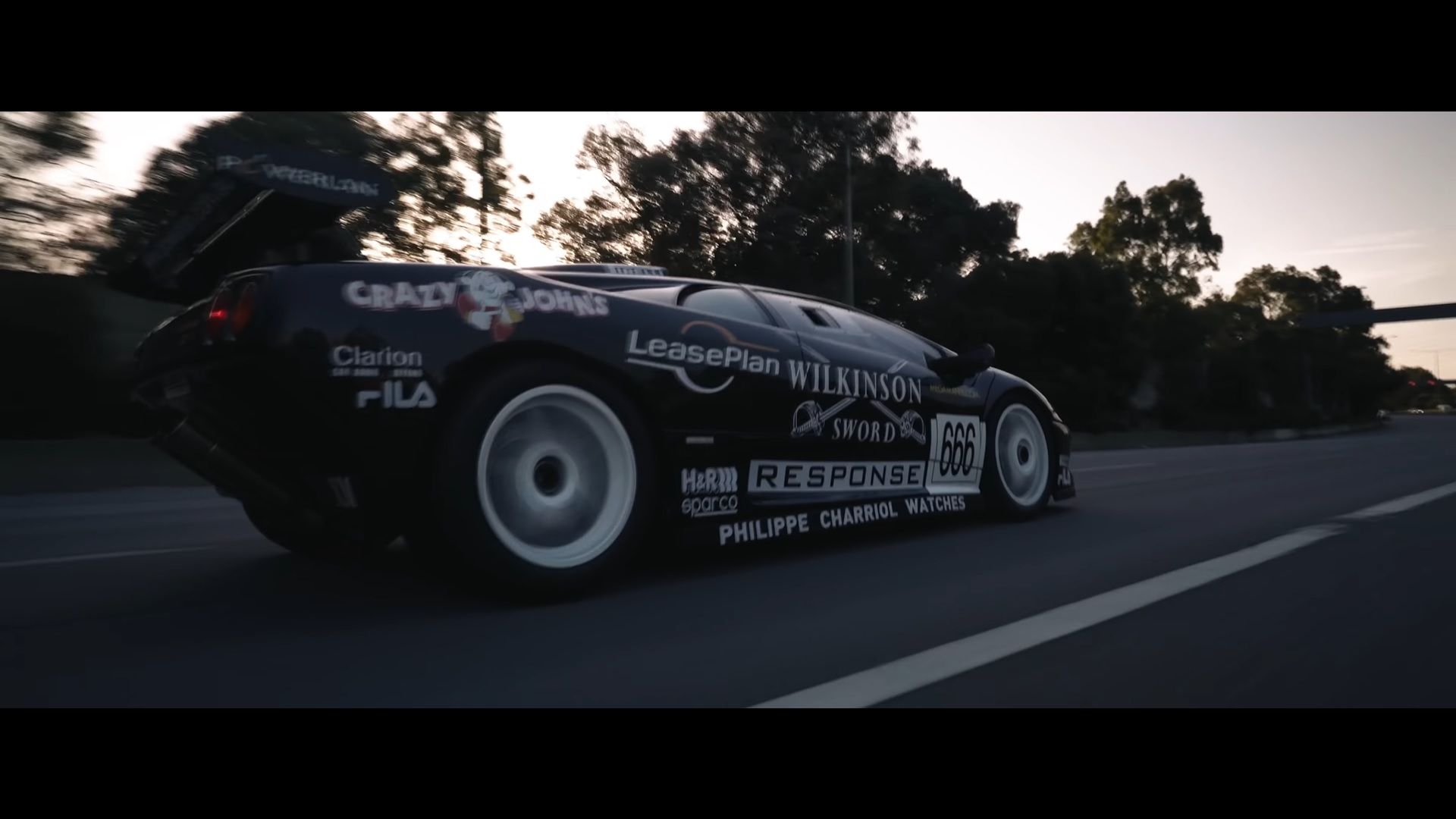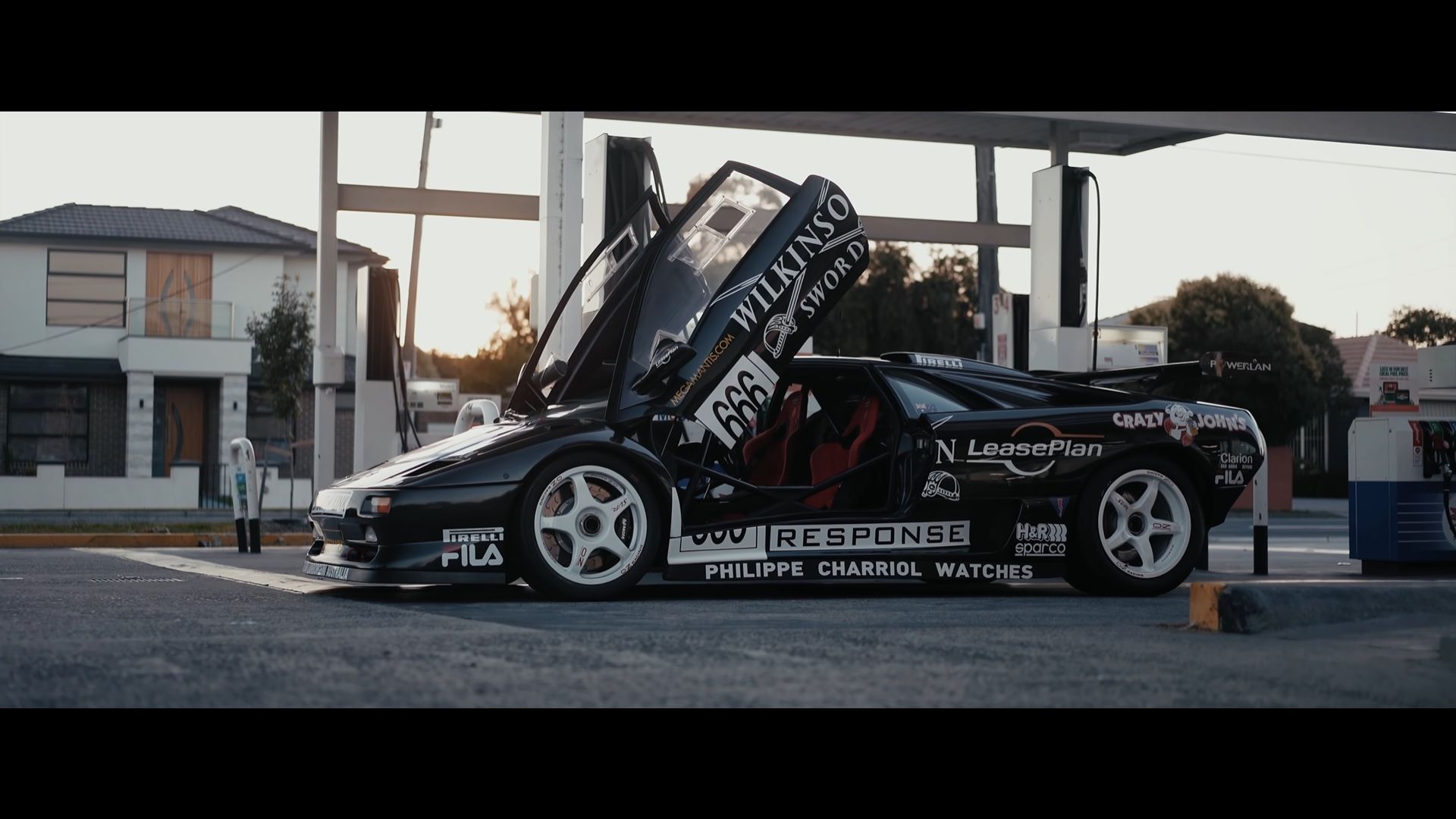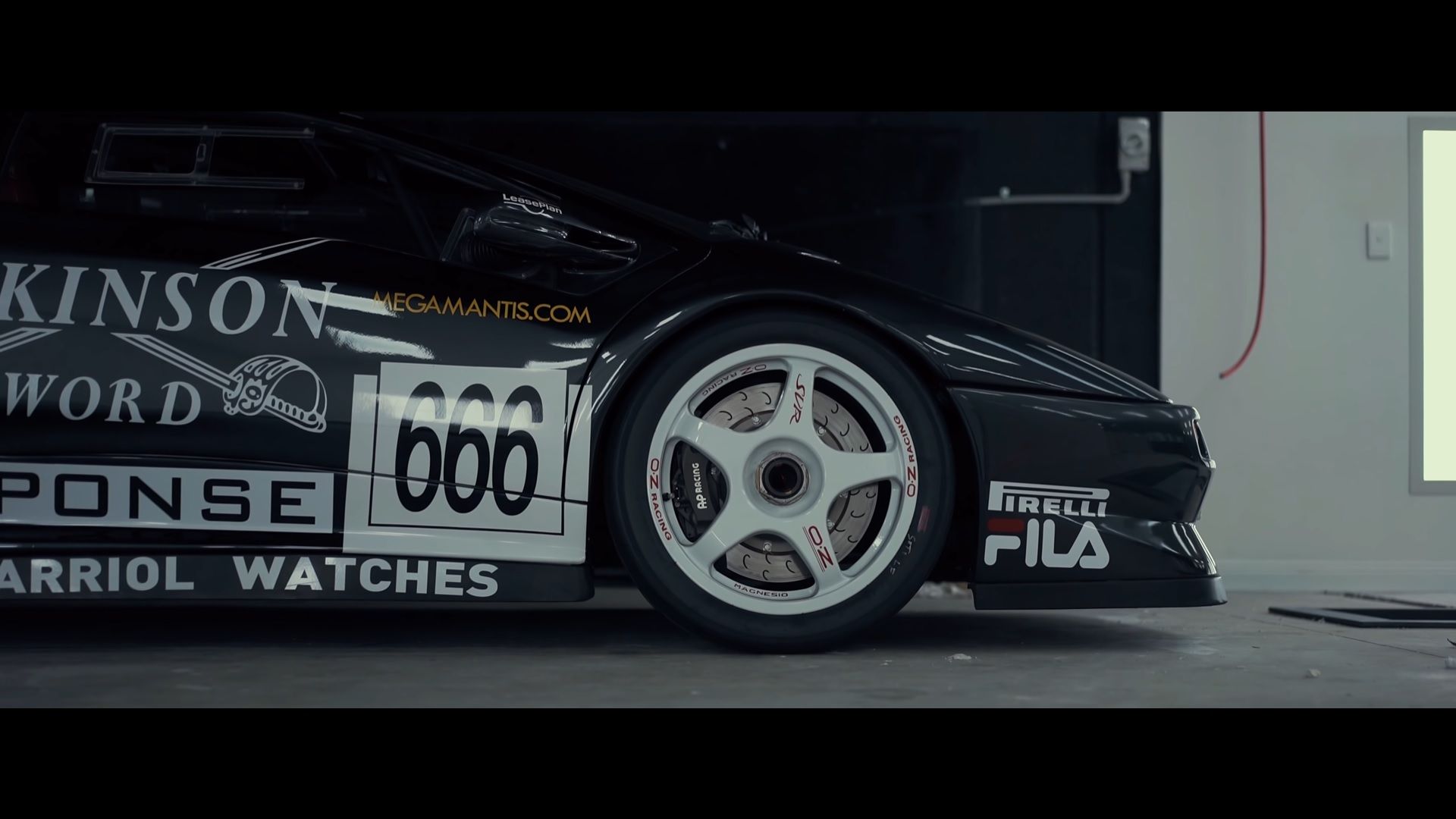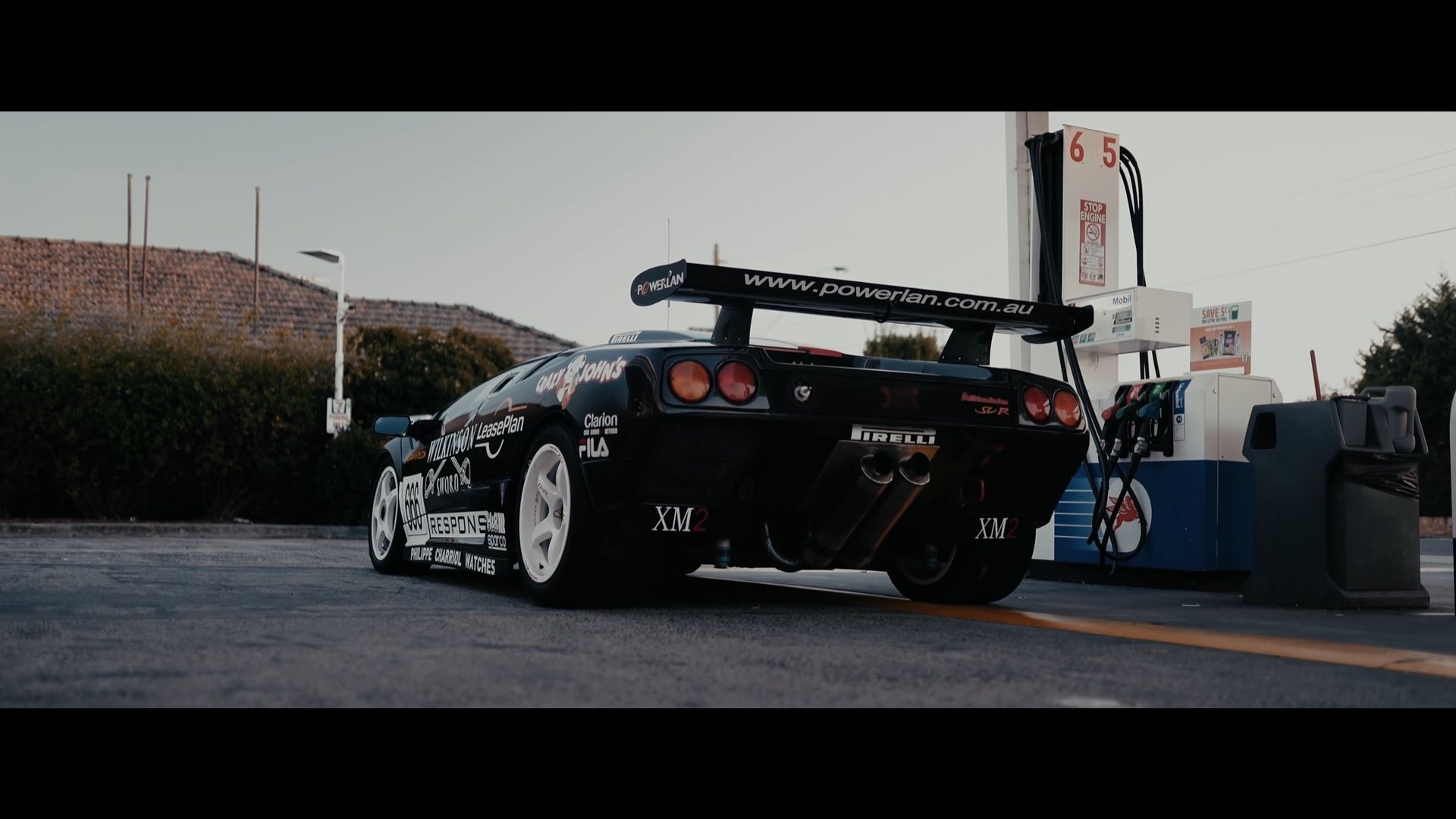The 1990s were a difficult time for Lamborghini. The Italian company offered only two vehicles and one of them was the weird LM002 SUV, which was eventually discontinued in 1993. The other one was the Diablo, which went on to become one of the brand's most iconic models. The supercar that made the transition between the legendary Countach and the Murcielago, the Diablo was the first Lambo to spawn an official factory-built race car. It's called the SV-R, Lamborghini made only 31 of them, and you can buy one until February 21, 2021.
Showcased by Hartnett Media, which had the honor to film it while being driven on public roads, this black-liveried Diablo SV-R is the 16th example of the 31 built. It's located in Melbourne, Australia, it has been fully restored to race-ready specification, and it comes with only 14,870 miles on the odometer.
It's not a mind-condition car though. There are minor stone chips and patina marks on the front fenders, while the bucket seats and the steering wheel show some signs of wear.
The car is obviously not legal for road use, but it can be converted with slight modification given its age. It's also eligible for International GT Legends series racing, which also includes the LeMans Classic event.
This specific car was first campaigned in Europe, where it won the Lamborghini Super Sport Trophy championship in 1998. It was then brought to Australia to compete in the 2000 and 2001 seasons of the Australian Nations Cup series.
The Diablo SV-R is a thing of beauty if you're into race cars, but you can find out for yourself in the video below.
The Lamborghini Diablo SV-R
The Diablo SV-R is one of five factory race cars based on the Diablo supercar and first to arrive in early 1996, six years after Lambo introduced the nameplate. A lightweight competition version of the SV, it featured a stripped-down interior with a roll cage and a racing seat, while its pop-up headlamps were replaced with open ducting. The 5.7-liter V-12 was retained, but power increased slightly to 533 horsepower and 441 pound-feet of torque, 23 horses and 13 pound-feet more than the road-legal SV. It ws also some 421 pounds lighter than the street-legal Diablo SV. The SV-R was developed for the one-make Super Trofeo series, with 28 cars fielded in the first season.
The success of the SV-R prompted Lamborghini to develop four more race-spec Diablo models. The Italians introduced the Diablo GTR as a replacement for the SV-R, but also built a GT2-spec car for international racing. The Diablo GT-2 was preceded by a GT1-spec model that required road-legal cars for homologation, but Lamborghini eventually shelved the project due to financial difficulties. Only two Diablo GT1s were built, a race-spec car and a road-legal example. Finally, Lamborghini built a small batch of race cars for the Japanese GTC series, named Jota at the request of its Japanese Owners Club. Three cars were built, including a road-legal model.
Lamborghini developed a handful of versions, including the VT, SE30, SV, and GT. The road cars were powered by 5.7- and 6.0-liter V-12 engines without output ranging from 485 to 595 horsepower.

